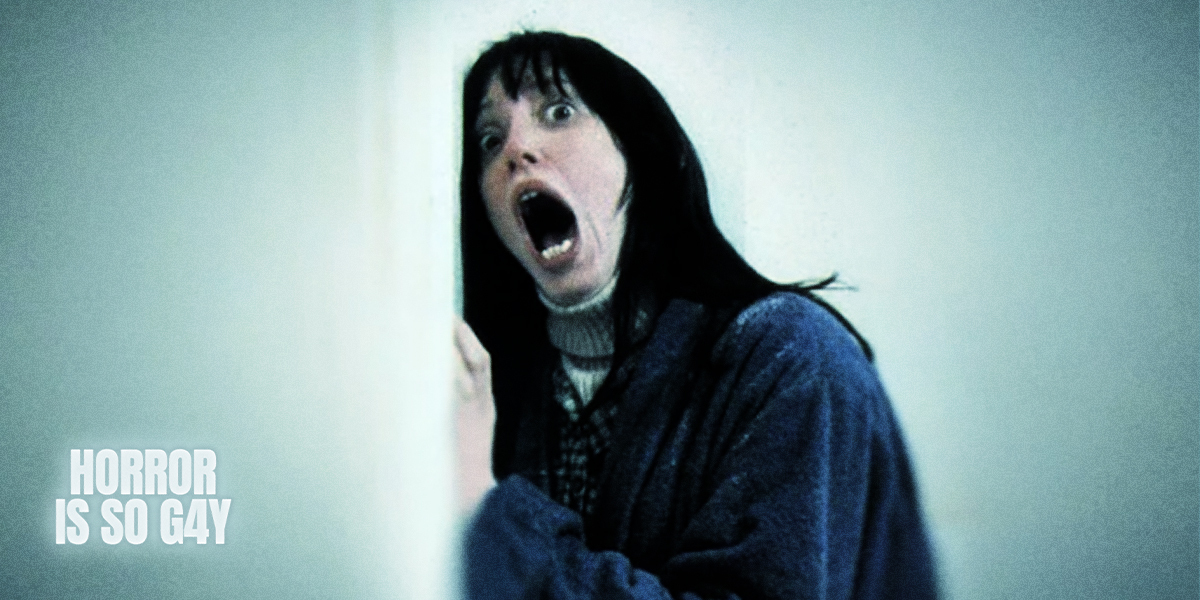When I was a teenager I had two posters on my wall: the Italian poster for On the Waterfront and the French poster for Breathless. Representing the two genders I was trapped between — angsty masculinity and artsy femininity — these posters were a clearer picture of me than any yearbook photo.
Maybe this is why every shirt I had was a graphic tee featuring some movie or band I loved. Maybe this is why the real work of art in my room was the bookcase that contained hundreds of multicolored DVDs.
We live in a capitalist society worthy of critique, but there’s a fine line between embracing consumerism and cherishing art objects — especially for teenagers.
Throughout her idiosyncratic body of work, queer filmmaker Jennifer Reeder centers this fine line. Her young female characters are not always capable of defining themselves or communicating with others, but they have their stuff. It is through their stuff they are known.
Trained as a dancer before moving into video art, Jennifer Reeder’s narrative work is lyrical and experimental. Film to film, she repeats visual motifs, lines of dialogue, and even full scenes. Repetitions hit like echoes from a dream.
The dialogue in Reeder’s films is stylized and stilted. Her characters — young and old — fail at verbal communication and must find alternate methods. In And I Will Rise If Only to Hold You Down, the teen girls write messages with their fingers on each other’s backs. In Blood Below the Skin, the girls communicate their hidden gay feelings telepathically. In almost all of her films, either as part of a school choir or in the fantasy space of a musical, characters sing haunting renditions of songs from unexpected artists like Cyndi Lauper and Judas Priest.
But the primary way Reeder’s characters communicate is through their stuff. In this way, her short documentary Lola, 15 is the Rosetta Stone for her body of work. Lacking in many of the qualities of her other films, this short documentary introduces us to a girl using only her body and space. With a partial 360 pan reminiscent of Chantal Akerman’s La Chambre, Reeder focuses on the real-life production design of this teen girl. Her films occasionally equate cis biology with girlhood — my one frustration with her work — but this film confirms that it’s not menstruation that defines us at that age but our favorite records, the songs we sing, the posters on our wall, and how we decorate our skateboards.
Her first feature as writer and director, Knives and Skin, is the culmination of her narrative shorts. (Some of you may recognize Reeder’s name from her directorial work on Fawzia Mirza’s Signature Move. While a clear outlier in her filmography, it’s just as interesting to observe how that film is in-line with Reeder’s fascinations.)
Unlike most movies about missing teen girls, this film begins with the girl herself. Carolyn Harper is on a date with a teen boy if kissing by a lake counts as a date. She’s wearing a marching band uniform and, with that, tells us what kind of teen girl she might be. When Carolyn doesn’t want to keep hooking up, the boy cruelly leaves her in the cold. He even drives away with her glasses, a personal belonging that does even more than communicate taste.
As the town reckons with Carolyn’s disappearance, there is an emphasis on her things. Her mom is protective of them, telling the cops not to touch her stuff and warning that they shouldn’t be in her room at all. At the same time, Carolyn’s mom becomes obsessed with these mementos of her daughter. She begins to wear her clothes as if becoming her will bring her back.
All the girls in the town communicate so much through their wardrobe. Some girls wear simple shirts featuring names like Angela Davis or colleges like Bryn Mawr. Other girls wear heightened fashion to scream out their individuality and otherness. Then, of course, there’s the opposite: girls who opt for their cheer uniform and the anonymity of a matching school insignia.
But queer cheerleader Laurel finds other quiet ways to communicate. Her and her new crush pass notes between bathroom stalls like a romantic glory hole or a public school Pyramus and Thisbe. Later, they will become less direct (more direct?) and begin passing small objects instead — a cat figurine, a small plastic flamingo, intricate sea shells. There is no loud confession of feelings. There is just glances and stuff. Laurel’s version of coming out is returning the pretty pink dress she’d planned to wear to a school dance.
This is a dense film and there are so many other characters and moments to highlight. There’s the girl who is selling her mom’s underwear who will later balk when the substitute teacher trying to have sex with her doesn’t have any books in his room. There are the paper marching band hats the search party wears as if calling Carolyn back by mirroring her appearance. There are the specific ways each girl decorates her phone.
And, of course, there’s the reminder that the last thing we do at the end of a relationship is exchange each other’s belongings; the last thing we do after someone dies is leave objects at their grave.
Jennifer Reeder’s latest film, Perpetrator, finds her committing even more to the horror genre while maintaining her own unique voice.
There are repetitions from Reeder’s past work — a character writes on another character’s hand and the movement of her finger is subtitled — but this feels like the beginning of a new phase in her oeuvre. It makes sense considering the film is about a character moving from girlhood to womanhood.
When we first meet Jonny, she’s breaking and entering into a home straight out of Knives and Skin. She’s stealing stuff — jewelry, dresses, shoes. When she brings her spoils outside to her accomplice, she jokes that she also stole a signed first edition of Wuthering Heights. She gives him the jewelry for cash and keeps the clothes and shoes for herself.
Jonny’s home is unlike any we’ve seen in Reeder’s work since her video art. Reminiscent of her breakout piece, White Trash Girl, Jonny is from a lower income household than the suburban fascinations of Reeder’s other recent work. But her home doesn’t just communicate class — it communicates neglect. There is nothing on the walls. You don’t need to be rich to have stuff. The only stuff in Jonny’s home is on the floor.
She dresses up in her newly stolen outfit and begins talking to herself, about herself, becoming someone else. “She’s a great girl isn’t she?” Jonny says. “The moment she was born I knew she was special.” This will soon be revealed to be quite true, but Jonny can only recognize it when she’s wearing someone else’s clothes.
Perpetrator has a convoluted plot that also includes missing girls and a generational gift of shapeshifting super-empathy. Jonny is sent to live with her great aunt who aims to guide her into this unique womanhood.
When Jonny arrives at her new school, she gets to know her fellow students not by speaking to them, but by breaking into their lockers and going through their stuff. These items are all this group of teenagers has to hold onto since this school has mandatory uniforms for everybody. We can debate the benefits and harms of school uniforms in the real world, but in Reeder’s world they’re undeniably a reduction of the self.
Jonny’s ancestral gift allows her to begin taking the form of others, feeling everything they feel. This power is born on her 18th birthday, the clearest demarcation in our culture of adulthood. With these powers, Jonny has a new way of communicating. Rather than learning about people from their belongings, she’s able to use her super-empathy to understand them directly from afar.
Some people who are new to Reeder’s work have struggled with the amount of movie in this one movie. But, to me, it is best enjoyed as a sketch for what’s to come. Knives and Skin was a masterful culmination of years of other films. I look forward to seeing where the ideas and visuals in Perpetrator go from here. Especially since it seems Reeder’s characters are aging alongside her films.
If girlhood is defined by our stuff and the art objects we cherish, what does it mean for womanhood to be defined by something more ephemeral?
The girls — and adults with arrested development – in the films of Jennifer Reeder have understood themselves by what they own and what they love. What will it look like for her women to open up to a new sense of self? What happens when we’re defined not by our things, but our connections to one another?
I have not had a home in almost a year. Like Jonny, I’ve been nomadic, living out of a suitcase, surrounding myself with the stuff of others. But with a new job, in a new city, I will finally be able to settle down next month. I’ve already started thinking about how I’ll decorate that new place.
I realized, shocking even myself, that I want to keep my movie posters in storage. Instead, I want to fill my walls with hand-painted art I’ve gathered on curbs, from friends, from interacting with strangers. Maybe this is a deeper connection to other people and myself. Maybe this is womanhood.
Then again, maybe not. The primary decoration in any space that’s mine will always be my books, my records, and my hundreds of multi-colored DVDs lined up against the wall.
The short films of Jennifer Reeder can be viewed on the Criterion Channel. Knives and Skin is now streaming on Tubi. Perpetrator is now streaming on Shudder.










Comments
Drew-
I’m so happy for all the swimming shift to more in-depth reviews on the site. I’m assuming your stand out because our tastes align, but everyone is really doing great tv and move stuff. Yay Reise and Christina!
But to you in particular:
Thanks for shining a light on the art films and getting high with Ellen and her gorilla project.
I’ll keep coming back for this content, for sure!